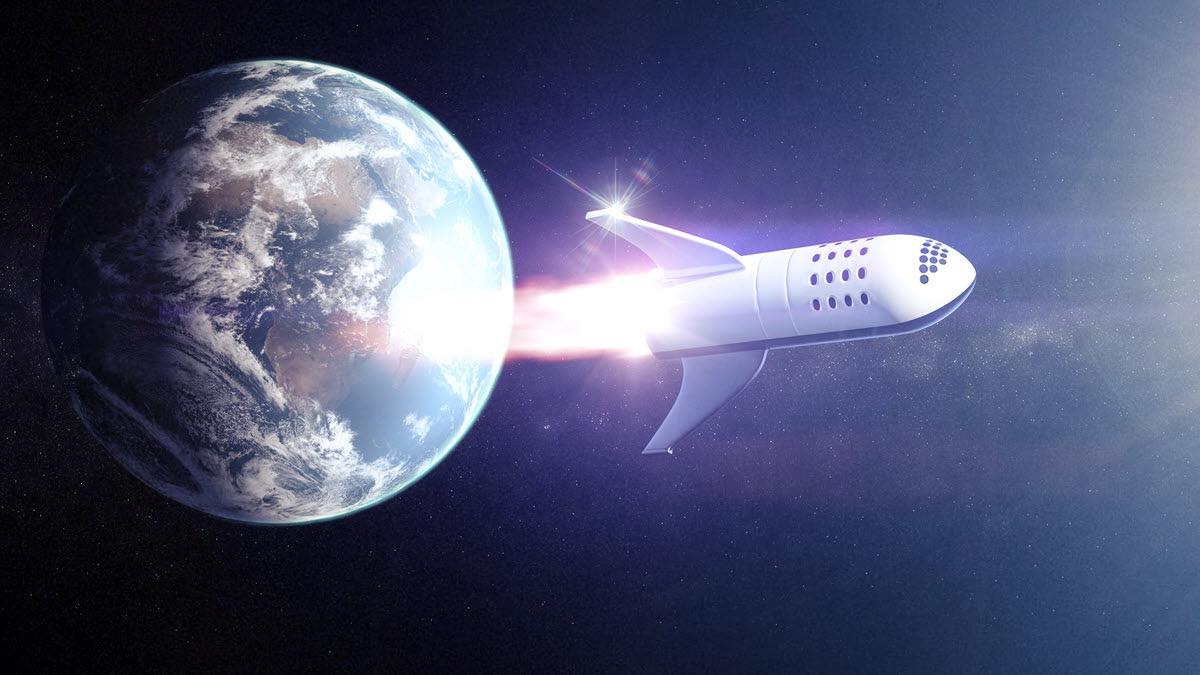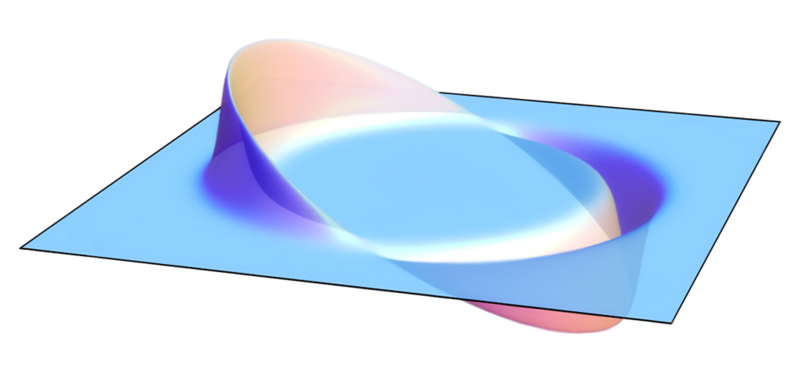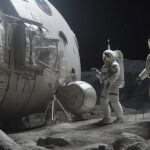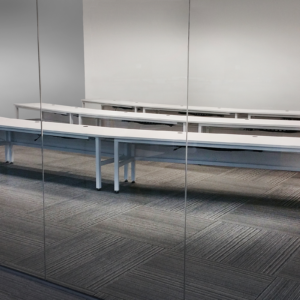Space Tourism: Is It the Final Frontier?
What is your take on billionaires Richard Branson and Jeff Bezos rocketing up into space?
Do you see it as a welcome distraction from the world’s woes of fire, flood, and pandemic?
Or are you one of the cynics who dismiss it as more “bread and circuses” to entertain the masses?
In either case, one thing is certain: private space travel is a rich man’s game, especially considering that only a few of the wealthiest countries in the world have the financial means to mount a successful trip to the edge of space.
It also reminds us of the fierce competition in 1911 to be the first explorer to reach the South Pole, a race in which Norway’s Roald Amundsen ultimately prevailed, and Britain’s Robert Falcon Scott tragically perished.
Let’s take a closer look at today’s billionaire space explorers.

Richard Branson, Founder Virgin Records and later Virgin Galactic
After establishing himself as a media mogul built on the success of his Virgin Records label, Richard Branson’s next act was to expand his brand into air travel by launching Virgin Atlantic and Virgin Australia airlines. In 2004, Branson announced a new venture, Virgin Galactic, which would take tourists into space.
At the time, many discounted this as nothing more than one of Branson’s many audacious publicity stunts. But, as it turns out, both the financial investment and the projects were real, and it was hoped the first space flight would take place by 2010. However, delays and a disastrous inflight breakup of the VSS Enterprise in 2014 set the project back many years as the revised spacecraft designs were developed and tested.
Upon hearing that his rival Jeff Bezos, founder of Amazon, and financial backer of Branson’s space flight competitor Blue Origin, planned to launch himself into space on July 20, 2021, Branson’s team sped up their launch plans several weeks to beat Bezos to the punch.
So, on July 11, 2021, Virgin Galactic successfully launched their VSS Unity spacecraft from the aircraft-based launcher VMS Eve; it carried Branson, three employees, and two pilots to the very edge of space (defined as 50 miles above sea level), where they experienced three precious minutes of weightlessness before returning safely to earth – and probably not a little bit of satisfaction at beating rival Bezos into space by a scant 19 days.

Jeff Bezos, Amazon Founder and Financial Backer of Blue Origin
Fresh off a divorce and recently retired from running the $386 billion company he founded – Amazon – one couldn’t help feeling a more middle-class version Bezos would be buying a new Corvette to fend off a looming middle-age crisis. But Corvettes are for mere mortals, like President Joe Biden.
After all, Bezos isn’t going to Disneyland, he’s going to space.
And, if the famously private Jeff Bezos was devastated by being beaten by Richard Branson, he didn’t show it when a video of unbridled joy was taken of him aboard the successful July 20, 2021 flight of Blue Origin’s New Shepard spacecraft – named after early space pioneer Alan Shepard (and not after the shepard’s Staff of Life, as some critics have dubbed it due to its suggestive shape).
Bezos formed Blue Origin on paper back in 2000, but the real activity began a few years later as the company acquired land in south Texas for a spaceport. By 2014, Bezos had reportedly invested over $500 million of his own funds into the company;* and in late 2015, the first New Shepard rocket successfully launched into space and then successfully returned to earth, touching down vertically in a controlled descent.
*In 2018, Bezos announced he would start investing a cool $1 billion from sales of his personal shares of Amazon stock into the Blue Origin space program every year.
Paul Allen, Microsoft Co-Founder and later Co-Founder of Stratolaunch Systems
We must mention Paul Allen among the pantheon of today’s billionaire space titans. Had Allen not passed away in 2018, the billionaire co-founder of Microsoft would still be leading the charge into space.
Among his many ventures, Allen partnered with Scaled Composite’s Burt Rutan to fund the successful launch of SpaceShipOne in 2004 through his Vulcan Inc. investment fund (catch the Star Trek reference?), followed by the development of the twin-fuselage Stratolaunch aircraft designed to launch a spacecraft into space from mid-air.
Sadly, after Allen’s passing, the Stratolaunch company was sold and eventually put into receivership. But Scaled Composites lives on, today it’s a division of Northrup Grumman, and it built the VSS Unity spacecraft, which carried Branson and his colleagues into space on July 11, 2011.
Elon Musk, Paypal Co-Founder and later Founder of SpaceX
Conspicuous by his absence as one of the billionaires in space this year was Elon Musk, Paypal co-founder, founder of SpaceX, CEO of Tesla Motors, and many other ventures.
But not to worry, Musk has the long game in mind, he’s determined to carry out perhaps the comprehensive plan of them all – to achieve the dream first sketched out by his boyhood hero Werner von Braun – to travel to Mars and establish a colony of humans on the red planet.
Since its founding in 2002, SpaceX has transformed itself from a rocket launch startup to become a major strategic partner with NASA, competing with Boeing for contracts in the Commercial Orbital Transportation Services (COTS) program. At the moment, SpaceX is leading Boeing, having successfully launched two NASA astronauts to the International Space Station on May 30, 2020 – making SpaceX the first private company to send humans into orbit.

(Boeing suffered a major setback with its competing Starliner project back on December 20, 2019, when the craft was nearly lost due to a clock synchronization issue; another attempt will be made in the coming days or weeks.)
![Starbase Tour with Elon Musk [PART 1 // Summer 2021]](https://i.ytimg.com/vi/t705r8ICkRw/hqdefault.jpg)
A rare video tour with Elon Musk of the SpaceX Starbase facility in Boca Chica, Texas (near South Padre Island)
Meanwhile, Elon Musk and SpaceX are plowing ahead with the installation of 29 raptor engines in their new Super Heavy rocket, planned to be test launched later in 2021 as part of the maiden orbital flight of the new SpaceX Starship system, which is designed to carry passengers and freight to low Earth orbit, the Moon (including a new contract for a lunar lander for the NASA Artemis Program), and later Mars.
What’s the Motivation for Billionaires Traveling to Space?
There are many possible reasons that our billionaire space explorers want to pursue their passion for space travel, including:
- To promote tourism in space, even when publicly funded government budgets face cutbacks.
- To create new space-based industries.
- To drive down the cost of space travel thanks to innovations such as reusable rockets.
- To advance scientific knowledge by observing the cosmos and our planet.
- To build a communication network with a fleet of telecommunication satellites circling the globe.
- To manufacture exotic products in the gravity-free environment of space, or mine the moon and planets for rare minerals or sustainable elements for living in space.
- To clean up space junk left behind by earlier space launches.
- To protect our planet from hazardous asteroid collisions.
- To create a new colony on the moon, Mars, or other planetary or lunar body, as a backup plan, in case our planet becomes uninhabitable.
Branson makes it clear that his eyes are firmly on space travel for tourists. According to reports, over 600 people have already purchased tickets to fly on Virgin Galactic (at a cool $250,000 per ticket). Flights will commence once the FAA approves its plans for commercial space travel, now thought to be sometime in 2022 (after conducting two more successful test flights).
Bezos is reportedly a little more open about talking up the pure entertainment value of private space travel, calling it reminiscent of the “barnstorming” antics of early airplane pilots who drummed up public interest by conducting aerobatic shows across the country.
Blue Origin’s commercial space travel passengers are not expected to fly before 2022 and might possibly need to wait to fly on their next generation spacecraft, dubbed “New Glenn” after space pioneer John Glenn, that’s scheduled to begin testing in late 2022 at the earliest.
Elon Musk, on the other hand, is quite driven and methodical in his approach to space travel; his eyes are on the prize to successfully land multiple rockets on Mars to start a new colony and to travel there himself during this lifetime.

The Star Trek Effect
Yes, there are indeed many altruistic (and financially lucrative) justifications for today’s billionaire space titans to spend their fortunes on private space ventures… but are we overlooking the most obvious one of all?
Is it possible that it’s a simple childhood fascination that was born from the likes of a sixties sci-fi television series (Star Trek) and a blockbuster movie franchise (Star Wars), that’s the real motivation?
Branson, Bezos, Allen, and Musk are not the only billionaires who draw inspiration from Star Trek/Star Wars.
For example, we have to look no further than the late Apple co-founder Steve Jobs for evidence of this. When introducing the Apple iPhone to the public for the first time in 2007, Jobs invoked the name of the iconic Star Trek handheld communicator device no less than four times:
So, let’s go ahead and turn it on.
This is the size of it. It fits beautifully in the palm of your hand.
So, an iPod, a phone, and an internet communicator.
Apple added video calling (FaceTime) to its Star Trek-inspired communicator (oops, we mean iPhone) in 2010, and in the following years, it added Apple Health, another feature found on the fictional Star Trek Communicator, albeit Apple still has a ways to go to match the health diagnostics capabilities of the original one from the TV series.

So returning to the topic of space travel, we can see there are many cases where science fiction has inspired real products and services.
For example, Arthur C. Clarke and Stanley Kubrick’s 1968 groundbreaking masterpiece 2001: A Space Odyssey points to a future that certainly shows the future of booking travel on Virgin Galactic – minus the murderous robot HAL of course.
One movie that makes fun of this phenomenon of life imitating Hollywood is the 1999 film Galaxy Quest, in which an alien civilization receives broadcast television signals from earth of a Star Trek-like TV series and builds a fully functional spaceship based on nonfunctional Hollywood props.
How Close Are We to Achieving Star Trek’s Warp Drive?
One of the most disappointing aspects of the current plans for space travel over the next decade is how mind-numbingly slow it will be.
Slow you say?
How can it be slow when spacecraft travel at thousands of miles per hour?
The issue is the immense distances involved.
Let’s take a theoretical trip to Mars, for example.
It takes light (which travels at the speed of, umm, light) between around 3 hour and 22.5 minutes to travel from earth to mars (at 299,792 km per hour); the exact time depends on whether earth and mars are close or far apart on their respective orbits at any one time. Also, keep in mind this is straight line distance, which may mean traveling very near (or even through) the sun, which is obviously not recommended for space travel.
Now let’s look at a speedy spacecraft, NASA’s New Horizon; it traveled at 58,000 kph to Pluto. That’s a fraction of the speed of light, quite a bit slower. And larger spacecraft can’t achieve that speed.
There are other speed bumps as well.
As we mentioned above, it’s not practical to travel in a straight line to mars, you’ll get too close to the sun. Instead, you have to wait for the planets to line up, a launch window that only happens every 26 months.
Then it will take about 9 months for a spacecraft to reach Mars.
Once you land on the red planet, there’s another delay. Because of the motion of the planets, you can’t return home right away, you’ll need to wait about 3 months for the orbits to align again for a successful return trip, which will take another 9 months.
All told, the plan on your round trip to Mars, taking 21 months in total!
Where is our Warp Drive when we need it???
The Theory behind the Star Trek Warp Drive, and Why We Need It
So why can’t we just have a Warp Drive system like on Star Trek or Star Wars, wouldn’t that make space travel much more palatable?
It sure would!
Star Trek fans will know that the original Warp Drive speeds are calculated as a cubic function, with Warp 1 representing the speed of light, Warp 2 representing 8 times the speed of light, Warp 3 representing 24 times the speed of light, etc.
Now we’re getting somewhere!
In keeping with our Star Trek theme, how long would it take to get to planet Vulcan, by this we mean the planet 40 Eridani in the constellation of Eridanus, and not the fictional Vulcan planet that was destroyed in the Star Trek storyline.
Planet Vulcan (40 Eridani) is about 17 light-years from our sun.
So at a fictional Warp 1, it would take a full 17 years to reach Planet Vulcan, but at Warp 3, it only takes 9 months (which by coincidence is the time as a slow trip to Mars…), while at Warp 7, it would take less than 24 hours!
Now we’re talking!
So how close are we to achieving a Warp Drive?
Has it ever been done before?
The Truth is Out There if you can Make Sense of It
Now is the point where we make the leap from science fiction to potential science conspiracy.
If you’ve been following the news, the US government recently provided declassified information on its heretofore secret projects to collect and interpret UFO sightings.

Yet after all these years of waiting and all these years of conspiracy theories about UFOs, the report landed with a quiet thud when it was issued.
(Perhaps we are collectively worn out, e.g. essentially numb, due to the difficult circumstances of the global pandemic and can’t react to news like we normally would…)
The short TLDR version of the US Government’s report on UFOs is that there are some very intriguing sightings (now confirmed for the first time) that, according to government researchers and military experts, frankly don’t seem to have a conventional explanation – particularly in the way some of these purported spacecraft seem to hover in mid-air and then suddenly accelerate away at great speed.
What to make of the situation?
Perhaps Facebook user Molly Elizabeth expressed it best in a post that went viral around the world; she asked the simple, obvious question:
“What if UFOs are just billionaires from other planets?”
Seems like as good of an explanation as any other one we have at the moment.
Is it possible “others” have discovered these secrets of interplanetary travel, such as how to achieve warp speeds?
NASA has been investigating ways to speed up spacecraft for some time. One of the most practical methods seems to be a proton drive, a laser-like device that could shine on a small spacecraft (on the order of a couple of hundred pounds), accelerating it to near light speed, allowing a craft to reach Mars in around 3 days if the planets are aligned in an optimal position within their respective orbits.
Not bad, certainly better than a 9-month trip to Mars, but unfortunately, scaling the process up to the size of a large spacecraft seems difficult due to the incredibly large power demand of the proton laser.
But what about a true warp drive? Where are we with this idea?
Researchers have been looking into the idea for some time.
“The distance between past, present, and future is only an illusion, however persistent.”
— Albert Einstein
Back in 1994, the Mexican theoretical physicist Miguel Alcubierre Moya wrote a paper titled “The Warp Drive: Hyper-fast travel within general relativity” published in Classical and Quantum Gravity in which he envisioned a method for traveling faster through space by shortening (contracting) the fabric of space in the direction of travel and expanding it behind. The result is a “warp bubble,” which would allow a spacecraft in effect to travel quicker than the speed of light.
(Importantly, the spacecraft itself moves at conventional speeds within the warp bubble, meaning it does not travel faster than the speed of light, as that condition would violate the conventional laws of relativity, e.g. that an object with mass cannot attain or exceed the speed of light.)

The result, known as the Alcubierre drive after the author, inspired NASA scientist Dr. Harold G. White, to create a concept design for faster-than-light spacecraft, known as the IXS Enterprise (nb another Star Trek reference!) first introduced in 2013. The following year, the Dutch artist Mark Rademaker created some beautiful renderings of what this spacecraft could look like.

Dr. Harold G. White’s lecture at SpaceVision 2013, introducing the IXS Enterprise’s Warp Drive Concept
But the Alcubierre drive is not without its problems.
For example, in its original incarnation, you would need an incredibly large amount of negative energy to create a “warp bubble;” Alcubierre himself estimated that a modest size (100 m) bubble would require the mass of the entire visible universe.
In 1999, physicist Chris Van Den Broeck was able to calculate a change to the bubble that knocked down the mass requirement to a mass equivalent to that of our own sun – quite an improvement but still not practical.
Two recent papers address some of these theoretical issues with creating a practical warp drive.
Researchers Alexey Bobrick and Gianni Martire published a paper this past April in Classical and Quantum Gravity that outlines a solution to eliminating the need for negative energy – but at the expense of slower speeds, e.g. speeds limited to the speed of light. (In Star Trek terminology, this means Warp Speed 1 only, which is fast, but, as we’ve discussed, not that fast if you are going to travel long distances between galaxies.)
The second paper is by Erik Lentz, also published in Classical and Quantum Gravity, who proposes an alternate solution that allows the warp bubble to travel faster than the speed of light, yet dispenses with the need for negative energy by creating a self-reinforcing wave packet known as a soliton wave.
If these latest papers stand the test of time, we can hopefully see some exciting new developments that will make Star Trek-like Warp Drives possible for space tourists sometime this century.
Formaspace is your Partner for more Efficient Aerospace Research Labs, Manufacturing Facilities, and Control/Monitoring Operations
If you can imagine it, we can build it, here at our factory headquarters in Austin, Texas.
We build standard and fully custom industrial solutions to make your aerospace research labs, manufacturing facilities, and control/monitoring operation more efficient.

So whether you are building new or renovating an existing laboratory, cleanroom, assembly line, testing facility, or monitoring station, you should to talk to your Formaspace Design Consultant today to find out how we can work together to make your next project a success.
Find out why our clients, including Apple, Dell Computer, Google, Oculus, and SpaceX, choose Formaspace products.













